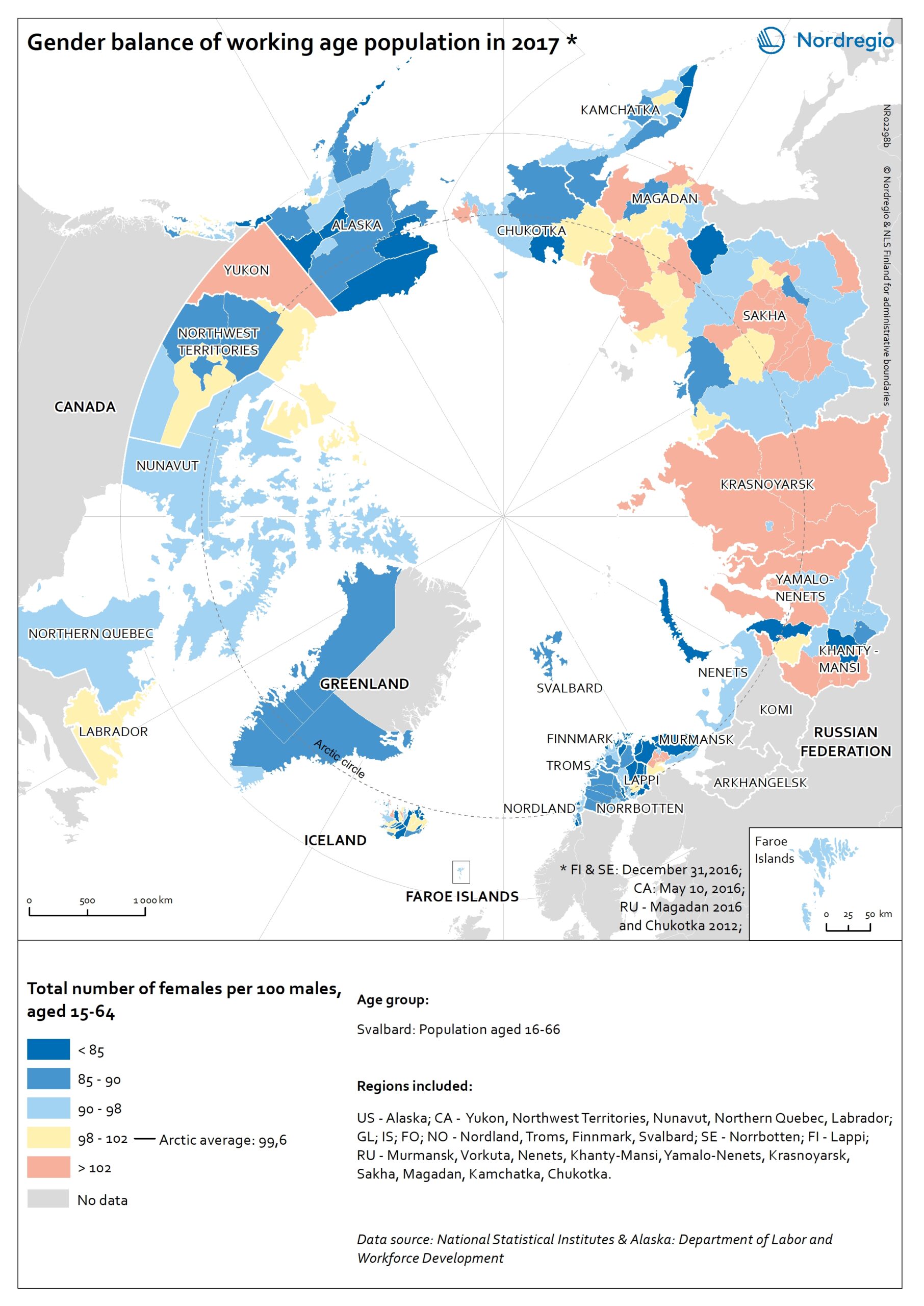The map shows the number of females per 100 males within the working age population (15-64 years) across the Arctic at the sub-regional level in 2017. This figure is commonly referred to as the female ratio in working age.
The blue tones represent subregions with a predominance of males within the age-group 15-64 (female ratio below 98). The red tones indicate subregions with a predominance of females within the age-group 15-64 (female ratio above 102). The yellow tone shows subregions with a balance between females and males in the age-group 15-64 (female ratio between 98 and 102).
The Arctic average was 99,6 which means balanced gender structure. The working age population was predominated by females in many subregions of the Russian Federation but also in the Yukon in Canada. The female predominance over working age population was especially high in many larger Russian Arctic cities (population over 200 000) such as Surgut (Khanty-Mansi, female ratio 110), Yakutsk (Sakha, female ratio 113), Murmansk (Murmansk, female ratio 108), and Nizhnevartovsk (Khanty-Mansi, female ratio 107). All other countries showed mostly predominance of male population. Male predominance was obvious especially in Greenland, Norway, Sweden, Finland, and Alaska (USA), where there were no subregions with female predominance within the working age population.

